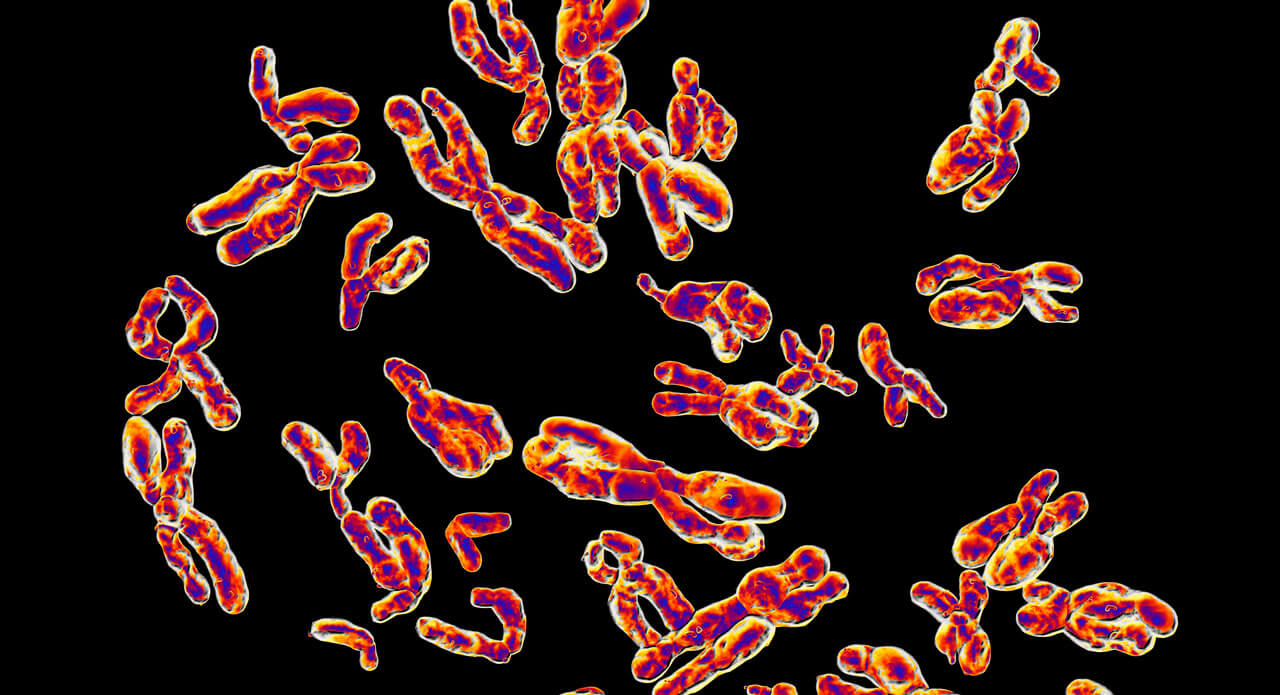What’s on the Y Chromosome Handed Down From Father to Son?

Among the many things parents hand down to their children are 23 pairs of chromosomes – those thread-like structures in the nucleus of every cell containing the genetic instructions for every person. We inherit a set of 23 chromosomes from our mothers and another set of 23 from our fathers.
One of those pairs are the chromosomes that determine the biological sex of a child – girls have an XX pair and boys have an XY pair, with very rare exceptions in certain disorders. Females always pass an X chromosome onto their offspring. If the father passes on an X chromosome, the baby will be genetically female, and if the father passes on a Y chromosome, the baby will be genetically male.
During that process of sexual reproduction, those two inherited chromosomes will “recombine” their genes, meaning that the chromosomes exchange genetic information with each other. Over the short term, this process of cross-talk means that the son or daughter has combinations of traits that aren’t necessarily identical to either parent. And over the long term, that genetic diversity helps to weed out traits that may be disadvantageous to a population.
In commemoration of Father’s Day, here’s a look at the Y chromosome and the role it plays in deciphering ancestry.
What’s on the Y Chromosome?
Though a short segment of the X and Y chromosomes are identical, gene sequencing has determined that more than 95 percent of the Y chromosome is unique to males – known as the male-specific region of the Y, or MSY. In fact, this region is so different from the X chromosome that the often-cited fact that humans are 99.9 percent genetically identical only applies when comparing people of the same sex.
Since only men have the Y chromosome, the genes on the MSY are thought to be involved in the determination of sex and development specific to males, including male fertility.
This part of the Y chromosome does not recombine sexually with the X chromosome during reproduction — meaning that when a father contributes a Y chromosome to the process of sexual reproduction, most of the genes on that chromosome don’t “mix” with the genes on the X. In genetic terms, they’re passed on asexually.
While genetic recombination allows for the expression of diverse traits in offspring, the mostly linear transmission of the Y chromosome isn’t necessarily a bad thing. In fact, that trait has allowed scientists to understand the history of male ancestry.
Using the Y Chromosome to Investigate Ancestry
The DNA in mitochondria – an organelle in the cell that produces energy – are used for genetic studies involving maternal lineage because the mitochondria has its own DNA distinct from the nuclear DNA, and we inherit mitochondrial DNA from our mothers only.
But since most of the Y chromosome is passed on without recombination, the DNA on that chromosome provides a genetic history of a man’s paternal ancestral line.
An example of this is a 2003 study that examined the genetic legacy of the Mongols, whose territory once spanned the largest contiguous land empire in human history.
The researchers studied the Y chromosomes of more than 2,100 men throughout a wide swath of Asia and found features that showed up in about 8 percent of the men in the region, from the Pacific rim to the Caspian Sea, even though it shows up in only 0.5 percent of men overall in the world. The variation in the lineage suggested that this feature on the Y chromosome originated in Mongolia about 1,000 years ago.
The researchers concluded that the rapid spread of that genetic feature on the Y chromosome could not have happened by chance but rather was likely the result of it being spread by the male descendants of Genghis Khan, the leader of the Mongol empire.
While it wasn’t possible to test Genghis Khan’s Y chromosome directly, researchers tested the Y chromosomes of the Hazaras of Pakistan, whose genealogy suggests they are direct male-line descendants of Genghis Khan. The study concluded that if the sample of more than 2,100 men was representative of the region, there would be about 16 million men with this Y chromosome feature – all presumably progeny of Genghis Khan.
Other studies have also identified other highly successful male lineages that started in China and Ireland.
And while not every father may be so genetically prosperous, what makes these studies possible is the thread-like substance that is the Y chromosome.
